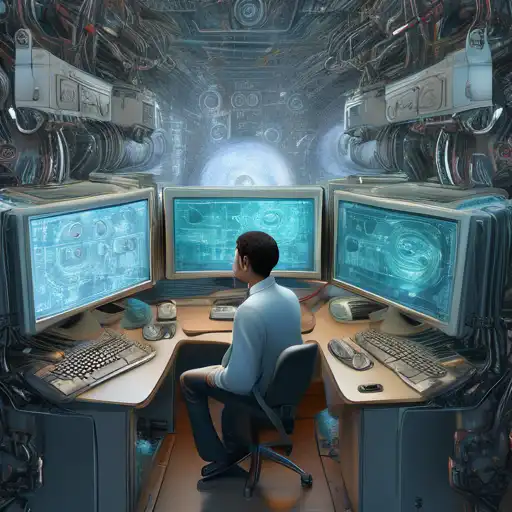Introduction to Computer Vision
Computer vision is a field of artificial intelligence that trains computers to interpret and understand the visual world. By leveraging digital images from cameras and videos and deep learning models, machines can accurately identify and classify objects—and then react to what they "see."
The Science Behind Computer Vision
At its core, computer vision involves the automatic extraction, analysis, and understanding of useful information from a single image or a sequence of images. It seeks to automate tasks that the human visual system can do. This involves methods for acquiring, processing, analyzing, and understanding digital images, and extraction of high-dimensional data from the real world in order to produce numerical or symbolic information.
Key Technologies Driving Computer Vision
- Deep Learning: A subset of machine learning where convolutional neural networks (CNNs) are used to improve the accuracy of computer vision applications.
- Image Processing: Techniques to enhance raw images received from cameras or sensors for better analysis.
- Pattern Recognition: The identification of patterns and regularities in data, which is crucial for object detection and classification.
- 3D Reconstruction: Creating three-dimensional models from two-dimensional images, enhancing depth perception in machines.
Applications of Computer Vision
Computer vision has a wide range of applications across various industries. Here are some notable examples:
- Healthcare: From detecting tumors in MRI scans to monitoring patient movements, computer vision is revolutionizing diagnostics and treatment.
- Automotive: Self-driving cars use computer vision to interpret their surroundings, detect obstacles, and navigate safely.
- Retail: Automated checkout systems and inventory management are made possible through computer vision.
- Security: Facial recognition and surveillance systems leverage computer vision to enhance security measures.
Challenges and Future Directions
Despite its advancements, computer vision faces challenges such as high computational costs, the need for large datasets, and issues with accuracy in varying lighting conditions. However, ongoing research in artificial intelligence and machine learning promises to overcome these hurdles, paving the way for more sophisticated applications.
Conclusion
Computer vision is transforming how machines interact with the world around them. By teaching machines to see, we're opening up a realm of possibilities across industries, making processes more efficient and unlocking new capabilities. As technology advances, the potential for computer vision is limitless, promising a future where machines can perceive the world as vividly as humans do.
